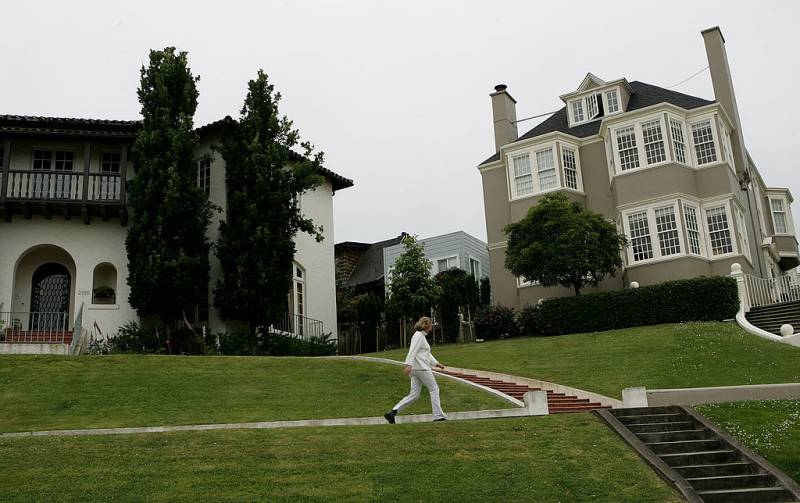Walton says he's especially concerned about certain communities in the Potrero Hill and Dogpatch neighborhoods, near the 22nd Street Caltrain station.
The burden of building more housing, particularly more dense housing like apartment complexes, has not been imposed on all communities equally in San Francisco, often falling disproportionately on the city's Black and Latino neighborhoods. Relatively wealthier communities that are largely white or Asian, on the city's west side, have not seen the same level of development.
In San Francisco's Mission District, for instance, cranes now dot the horizon, constructing multimillion-dollar condos, which has helped drive out scores of lower-income Latino families that have lived in the neighborhood for generations.
That's the kind of issue that David Garcia, policy director of UC Berkeley's Terner Center for Housing Innovation, says people should take seriously.
"I think it's fair to be cautious about the unintended consequences of allowing densification in single-family areas, particularly when those areas are populated mostly by renters who are already at risk of displacement," Garcia said.
It's an age-old tension in the Bay Area housing debate:
Density advocates say building more, building higher and building faster will bring down the price of housing across the region through basic rules of supply and demand.
But neighborhood and tenants' advocates often fear the short-term local effects of the build, build, build ethos.
Garcia, however, argues that denser housing policies needn't drive displacement.
A well thought-out proposal to allow the construction of fourplexes in San Francisco "could actually benefit communities of color in neighborhoods where there are higher proportions of people of color who own homes," Garcia said, as it would allow residents to add a second unit or convert their properties into fourplexes for added rental income.
Mandelman's fourplex legislation, he added, also has the potential to boost housing production by quite a bit.
"The potential increase in new homes is pretty significant when you consider the fact that the vast majority of California zoned land is reserved specifically for single-family homes," he said.
That holds true even in already-dense cities like San Francisco.
Mandelman's proposal, for instance, could increase housing density in some of the city's tonier western neighborhoods — like St. Francis Wood and Forest Hill — that have long been off-limits to planners and developers.
Roughly a century ago, the city's Forest Hill subway station was built just west of Twin Peaks, as Muni — and its streetcars — began to spread west. The Twin Peaks Tunnel, as it's called, runs through the hill and outlets at West Portal Station.
As those rail tracks were laid down, higher-income neighborhoods sprung up, including St. Francis Wood and Forest Hill.
"Those are neighborhoods that did not exist before the Twin Peaks tunnel was built, which is important to note," said Rick Laubscher, a transit historian and president of the Market Street Railway museum. "Forest Hill grew up as a white-collar, semi-privileged enclave, as did St. Francis Wood. That's where doctors and lawyers and high-paid professionals, almost all of whom were white, lived when they were built."
It's perhaps a historical irony, then, that the same train stations that helped create those wealthy neighborhoods of sprawling houses will be the legal anchors Mandelman is trying to use to build more dense — and perhaps more affordable — housing.
Those neighborhoods, though, have long resisted such a change. One 2018 battle in the Forest Hill neighborhood to block construction of a 150-unit affordable housing development for seniors may portend a rough road ahead for Mandelman's effort.
In an almost cookie-cutter example of housing density bouts that have played out across the city, neighbors shouted their grievances to the rafters during public meetings on the project, citing concerns that any formerly homeless person invited to live at the new affordable housing development could pose a physical danger to children in the community.
In the end, the project was defeated, partly because of such fierce resistance.
Most San Franciscans agree that affordable housing should be available for the city's essential workers, Mandelman said, but a lot of residents "also don't want to just have radical change in their neighborhood."
Asked about the likelihood of finding a "center of gravity" between opposing viewpoints on housing development, Mandelman said, "We'll find out."

